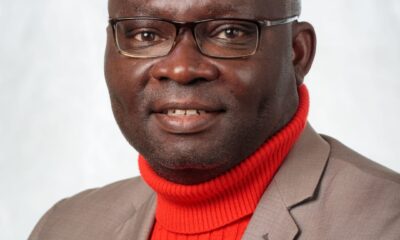Opinion
The Logic and Magic of Integrated Marketing Communications in the Promotion of Rotary Public Image
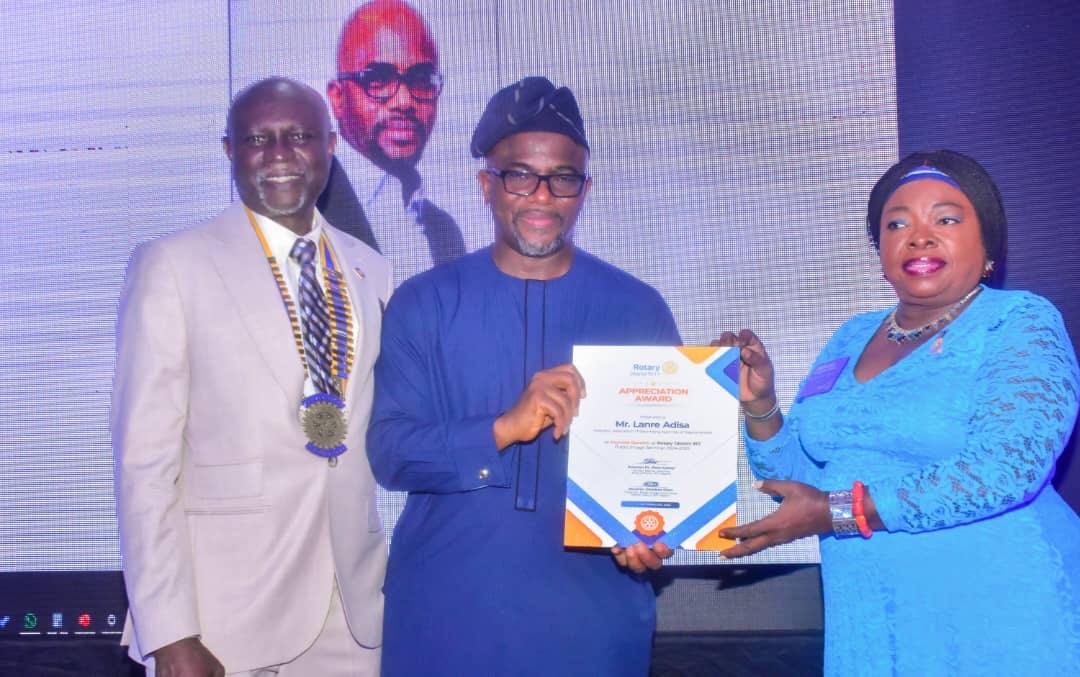
The Logic and Magic of Integrated Marketing Communications in the Promotion of Rotary Public Image
By Lanre Adisa
I feel highly honoured to have been invited to share my thoughts with you on the theme of Integrated Marketing Communications (IMC) Strategy as Magic for Public Image Promotion in Rotary. For starters, let me state clearly that I do not possess the magical acumen of Houdini, neither do I possess that of Professor Peller.
But I must state that the use of the word Magic is not out of place for those of us in marketing communications.
When developing campaigns, we often talk about logic and magic; logic being the empirical input that feeds the work we embark on for every new brief we receive from our clients; and magic being the outcome when it’s done in a way that beats everyone’s imagination.
This maverick of an outcome is so good, you don’t see it coming. This is the nirvana we all aspire to for every work we embark on in brand building.
The impact of every magical performance is often determined by the richness of the materials at the disposal of the performer as well as the prowess of the latter.
For this, let’s beam the light on Brand Rotary for a while. It’s not often that we as practitioners are given the opportunity to work on iconic brands. In the nonprofit space, it goes without saying that Brand Rotary is one of the most iconic one can find.
Worldwide, Rotary will be 120 years old next year. The year after that, it will be 65 years in Nigeria.
Its iconic status has not been earned just by the years of its existence, but more by the impact of its work globally and locally.
Founded in 1905 by Paul P. Harris as a business networking club, it has since evolved into one of the strongest movements for good around the world driven by its core mission of “Service Above Self”.
Here in Nigeria and globally, that mission has given birth to a lot of laudable programmes in the fields of education, health, water and sanitation. Perhaps the most ambitious and most impactful is the Rotary PolioPlus campaign.
Through its work with its members spread across the globe and a handful of partners, over 3 billion children have been vaccinated and over 20 million cases of paralysis arising from the effect of polio have been averted. And this is just taking on one area of intervention.
As laudable as the eradication of a disease like polio is, if we were to ask ten people outside the Rotary fold to list the organisations responsible for this feat, how many of them will mention Rotary? For me personally, when I think of polio eradication, Rotary doesn’t come to my mind first.
Whatever the answer to this question may be, it doesn’t negate the great work Rotary is doing for humanity. However, it doesn’t deliver the right value in the mind space of the different publics Brand Rotary will hope to appeal to.
Why is this so? The world has changed so drastically from 1905 and it keeps changing as we speak. The contest for the attention of the public has never been as frenetic as we are experiencing today.
So, if we all agree that the destination for every form of communication is magic, in a highly media-fragmented world that we live in, it’s safe to say that IMC is our magic wand.
The concept of IMC came about as a result of the proliferation and fragmentation of communications channels in the 20th century.
For brands to make sense of emerging media channels like the fast-expanding cable TV channels and digital technologies, there was a need for consistent messaging across all the different pertinent channels a brand has decided to use from the multitude of options available to it.
The term Integrated Marketing Communications was coined by marketing scholars and practitioners in the 1990s, driven by the American Association of Advertising Agencies (4A’s).
Don Schultz, an American Professor of Communications, who wrote a landmark book on the subject, Integrated Marketing Communications: Putting It Together and Making It Work (1993), is often regarded as the father of IMC. As defined by the 4A’s in the 1990s, “IMC is a comprehensive plan that combines various communication disciplines- advertising, public relations, direct marketing and sales promotion- to create a clear consistent and unified message for maximum impact.” The three things to note in this definition are:
A comprehensive plan
A clear and consistent unified message
Maximum impact
With the super pervasive reach of digital technologies, best represented by a plethora of social media platforms, the need for a comprehensive plan with a clear and consistent unified message delivering maximum impact cannot be overemphasised, no matter how big or small your media budget may be.
HOW CAN WE BRING IMC TO WORK MAGIC FOR ROTARY?
The Power of Consistency: The magic of IMC is in its ability to integrate various communication channels to create a unified and consistent message. Through this consistent messaging, trust and recognition are built over time. In today’s fragmented media landscape this is one way Rotary can rise above the noise. It will require being smart with whatever resources are available for each campaign. It will also require determining which particular communication channels will most effectively deliver the goods. Each media platform, be it social media or traditional media, must be selected and used with well spelt out goals and expectations on how it amplifies the message. The Rotary PolioPlus easily comes to mind in this regard. If this campaign were to be launched newly in this era, how would we go around it?
Storytelling as a Spell: We all grew up with stories. Nothing can be as captivating and engaging as a well told story. In truth, a relatable story can be spell-binding. People want to identify with the people in your story, and by extension, your cause, once they can relate with them.
This is something that comes easy for nonprofits. For instance, while a documentary or generalist content on World War II may give us reasons to think of the horrors of that human tragedy, we tend to be moved more about the accounts of that war when we are exposed to the stories and ordeals of the individuals who lived through that period.
It’s the reason why a film like Schindler’s List or Saving Private Ryan will leave a more longstanding impact on us than hundreds of generalist narratives of the war.
A good example of this is the Make A Wish Foundation in the US. Using emotional stories, it is able to raise funds by telling powerful emotional stories of children living with severe ailments, using cross-platform integration, while helping the children to attain their wishes.
The Magic of Multichannel Synergy: The use of multiple channels like email, social media and PR is one good way of amplifying the message.
We must determine the role of each platform in a way that complements one another while deepening the reach of the message.
We must coordinate our campaign in a way that ensures a ripple effect that helps to boost reach and engagement, especially when we have a limited budget.
Authenticity as the Magic Ingredient: To earn the respect and trust of the public, any brand worth its salt must be seen to be inherently authentic. Being authentic engenders genuine connections and transparency between a brand and its target audience.
Authenticity helps define your brand character, helping your audience to know what you stand for. Doing anything out of character will be easily flagged by your audience and this could come with serious consequences.
The moral here is that to keep the magic going, you must genuinely be yourself. When people are asked what Rotary stands for, our target audience must be able to answer that from what they’ve known Rotary to stand for over time. And nothing captures this better than the Rotary Four-Way Test
Is it the truth?
Is it fair to all concerned?
Will it build good will and better friendships?
Will it be beneficial to all concerned?
One good example of authenticity in action is UNICEF and its focus on the world’s children. Almost everybody knows that UNICEF is all about the children of the world. This authentic association is captured in its campaign “For Every Child”.
Target Audience Enhancement: One key asset that can aid the impact of IMC for Rotary is its extensive network of clubs across different strata globally and locally. This helps connect the message to its intended target and the general public most effectively.
The cumulative effect of these clubs projecting a singular message using global and local channels is invaluable. The trick here is ensuring that the message doesn’t get diluted in any way. The versatility of this vast network also lends itself easily to the nuancing of the message to the different strata of the network based on their sociocultural context.
Impact Measurement- The Magic Proof: It is not enough to have a spellbinding message cascading through our network of multiple clubs. In today’s world, we must be able to measure the impact of our magic.
Who are we reaching? Are we delivering the intended message? Is our messaging eliciting the right kind of action or responses from our audience? For this we need to deploy digital tools that can help us measure the impact of our campaigns from engagement to donations, down to volunteer/new members sign-ups. The lessons from one campaign can help us plan better and smarter for subsequent ones. This way, we can start working towards a magic formula.
Community Building as a Magical Force: One way a nonprofit can stay sustainable is by building a community around its causes. With its brand legacy spanning over a hundred years, this should not be of any challenge to Rotary.
In reality, engaged communities are the backbone of nonprofit. What IMC does is nurture these relationships over time. This is composed of not just the Rotary family, but also those whose values align with that of Rotary. It will also include those who have benefited directly or indirectly from the impact of Rotary’s work.
Observations & Recommendations
Before I wrap up, I believe it’s important to bring up some points for consideration.
Thought Leadership/Ownership of Causes: In as much as being around for a long time is a strength, it can also create a sense of overfamiliarity which in turn may translate to indifference on the part of your audience.
If you take the case of the PolioPlus campaign, while it is commendable that Rotary had a long running global campaign for the eradication of this disease, when the campaign got to its climax, for those outside of the Rotary circle, Rotary was not first to mind when one considered those in the forefront of polio eradication.
The public heard more of the Melinda & Bill Gate Foundation than any other organisation. Bill Gate became more of the face of that eradication in this part of the world than anyone else. I’m not basing this on any empirical data; it’s more of my observation of the public space. It begs the question, who is/are the face(s) of Rotary as regards its different causes in Nigeria?
The Need for Tactical Campaigns: Sadly, with the advent of social media and its retinue of influencers, there is a drift towards short-termism in brand building. Social media in particular is filled with thousands of initiatives and campaigns of different sorts. When you consider a campaign like the Earth Hour by the WWF, the single-mindedness of this one-hour activation is truly magic. The awareness generated around the issue of sustainability through the preservation of the environment from switching off the light by individuals and corporate entities at a designated day and hour around the world speaks to effectiveness.
Within the context of globally agreed causes within the Rotary world, what opportunities can we explore locally to create the sort of impact that is unmissable. A quick look through the Rotary social media pages at the moment doesn’t leave one with a sense of impact. Rather, it’s more of an album of activities.
Nuancing and Contextualising Global Messages: Being part of a global network is a great advantage. This affords Rotary the power to drive one singular message across the nooks and crannies of the world. While the thrust of the message may be the same everywhere, it is not likely for the context to be the same. It’s for this reason that deliberate attempts must be made to localize global campaigns. This will make the campaigns more relatable and much more effective in delivering the desired outcomes. This will also lead to talkability.
Aiming For Impact Beyond Rotary: I personally commend Rotary for its foresight in establishing Rotaract clubs as a way of attracting the next generation. However, one still gets the sense that Rotary activities are confined to the world of Rotary as regards their reach.
It is important that Rotary deploys media-neutral ideas that deliberately target non-members, especially the youth, using the most relevant platforms that they can relate with to enable them take interest in Rotary as an entity as well as support their activities. This is when the magic of IMC really does its job.
A good example of this is another brilliant campaign from the WWF titled #Last Selfie. Using the Snap Chat platform, pictures of different animals that are likely to go extinct were posted to users of the platform that disappeared in seconds.
They ended with messages stating this may be the last time they are seen without any support. This same campaign reached over 120 million users on Twitter (now X). The WWF was able to raise their monthly donation target within a week of the campaign.
In conclusion, I would like to commend the founding fathers of Rotary and those of you who have continued to raise the banner of doing good for humanity. Today’s new media platforms may be fragmented.
We have since gone past the age when we all watched the same programme on TV or radio; when newspapers held sway in terms of information and education. Today, the mobile phone could be likened to an extension of our human anatomy. While all of this can appear confusing, therein lies opportunities to find your space and audience as a brand.
What is needed is a well-crafted message with an emotional human angle, delivered through carefully selected channels and deployed to reach your audience wherever they may be. For Rotary, this is the way to keep the magic going.
Thank you for listening. I wish Rotary many more centuries of delivering Service Above Self.
* Lanre Adisa is the President, Association of Advertising Agencies of Nigeria (AAAN) and Chairman, Heads of Advertising Sectoral Groups (HASG)
Opinion
Farooq Kperogi: One president, many spokesmen, and mixed messages amid misery
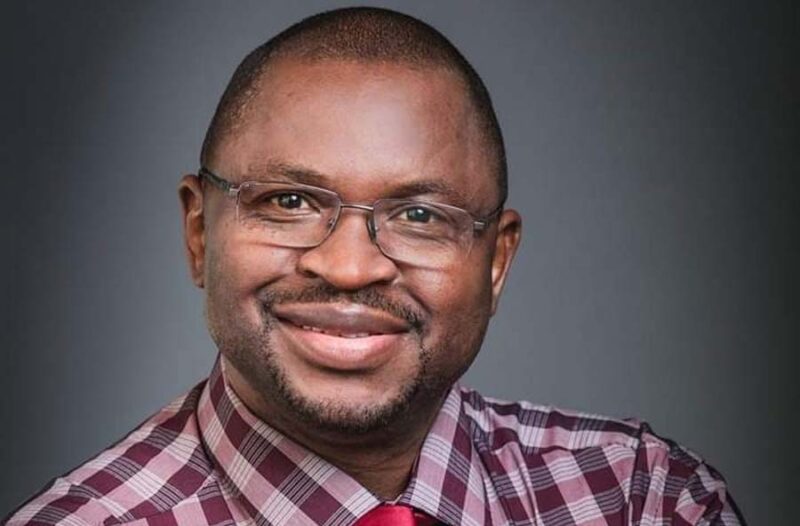
Farooq Kperogi: One president, many spokesmen, and mixed messages amid misery
President Bola Ahmed Tinubu’s unparalleled appointment of three official, cabinet-level spokesmen—in addition to 9 other senior media aides— symptomizes an insidious governmental malaise. It shows a government that is obsessed with public relations at the expense of public welfare, propaganda at the expense of progress, and mind management at the expense of meaningful management.
On November 14, Daniel Bwala, the former mouthpiece for PDP’s Atiku Abubakar during the last presidential campaign, was inaugurated as Tinubu’s Special Adviser on Media and Public Communication. This move added him to a line-up that already included Bayo Onanuga, Special Adviser on Information and Strategy, who had been informally recognized as the senior spokesperson after Ajuri Ngelale’s dramatic exit, and Sunday Dare, Special Adviser to the President on Public Communication and National Orientation.
Yet, on his very first day, October 18, Bwala brazenly declared himself “the spokesman for the president” to State House correspondents, proclaiming that he was the direct successor to Ngelale. His Twitter declaration further cemented his self-anointment: “Resumed officially as the Special Adviser, Media and Public Communications/Spokesperson (State House).”
Since Onanuga had effectively functioned as the spokesman for the president after Ngelale was forced out of the Presidential Villa, it seemed like Tinubu had no confidence in Onanuga and chose to upstage him by bringing in Bwala.
That puzzled me. I wondered what reputational, symbolic, or political capital Bwala had to earn such an edge. Here’s a man who is deeply resented by Tinubu supporters for his erstwhile caustic attacks on the president and APC during the last election, who is reviled by the opposition for his perceived treachery and mercenariness, and who is disdained by people who couldn’t care less about both Tinubu and the opposition. Such a person is more of a reputational liability than an asset for persuasion.
So it came as no surprise when I read a swift news release from Bayo Onanuga disclaiming Bwala’s self-description as “the spokesperson” for the president. TheCable of November 19 reported that Tinubu was “furious on learning of Bwala’s manoeuvre and immediately instructed Onanuga to issue a clarification.”
READ ALSO:
- Customs busts ₦117m drug smuggling ring in Ogun
- State police too risky, we won’t support it – Herdsmen group
- Tinubu writes Senate, seeks confirmation of Oluyede as Chief of Army Staff
The “clarification” says Bwala is now Special Adviser Policy Communication and Sunday Dare is now Special Adviser, Media and Public Communications. “These appointments, along with the existing role of Special Adviser, Information and Strategy, underscore that there is no single individual spokesperson for the Presidency. Instead, all the three Special Advisers will collectively serve as spokespersons for the government,” the statement said.
Tinubu has by far the largest media team in Nigeria’s history—just like he has the largest cabinet in Nigeria’s history. Yet his government has inflicted the most hardship on Nigeria and demands the greatest sacrifice from Nigerians whom he has already stripped of basic welfare and dignity.
Despite this elaborate roster of media professionals, Tinubu’s government stands as a paradox: the most expansive communication team in Nigerian history, yet the most tone-deaf administration in addressing the agonies of ordinary Nigerians. Like his record-breaking cabinet size, his communication machinery seems less about functionality and more about optics—a poorly orchestrated façade against the backdrop of deepening national suffering.
Historically, Nigerian presidents have managed with far leaner communication teams. President Olusegun Obasanjo had a relatively modest media and communications team. His first spokesperson was Doyin Okupe, who was designated as Special Assistant on Media and Publicity from 1999 to 2000.
He was succeeded by Tunji Oseni whose designation was changed to Senior Special Assistant on Media and Publicity and served in that role from 2000 to 2003. He was replaced by Remi Oyo from 2003 until 2007.
Apart from these official spokespeople, Obasanjo appointed Dr. Stanley Macebuh as Senior Special Assistant on Public Communications. After firing him, he replaced him with Emmanuel Arinze.
He also appointed Femi Fani-Kayode as Special Assistant on Public Affairs and replaced him with Uba Sani after elevating him to a minister. In other words, Obasanjo never had more than three media/communications people at any one time, and he always had just one official spokesperson.
Umaru Musa Yar’Adua’s had Olusegun Adeniyi as his one and only media person/spokesperson. He is also on record as the first president to elevate the position to a cabinet-level position by redesignating as a “Special Adviser” position.
READ ALSO:
- Crude-for-naira deal: NNPC fails to deliver agreed crude oil – Dangote refinery
- Eight Ogun teenagers gang-rape 14-year-old girl
- Netanyahu: Italy, Canada, others to enforce ICC arrest warrants against Israeli PM
Goodluck Jonathan sustained this tradition. When Ima Niboro was his Special Adviser on Media and Publicity from 2010 to 2011, he had no other media/communications person. And when Reuben Abati took over from Niboro from 2011 to 2015, he was the only spokesperson and media/communications person for the president.
The slide into a propagandocracy began with Muhammadu Buhari, who doubled down on PR appointments. While Femi Adesina served as his Special Adviser on Media and Publicity, Garba Shehu operated as Senior Special Assistant on Media and Publicity. Buhari’s entourage also included social media mavens, photographers, and digital content creators—an unprecedented escalation in spin management.
There was Tolu Ogunlesi (Special Assistant, Digital & New Media); Lauretta Onochie (Personal Assistant, Social Media); Bashir Ahmad (Personal Assistant, New media); Sha’aban Sharada (Personal Assistant, Broadcast Media); Naziru Muhammed (Personal Assistant, TV Documentary); Sunday Aghaeze (Personal Assistant, Photography); and Bayo Omoboriowo (Personal Assistant/ President’s Photographer).
But Tinubu has taken this expansion to absurd heights. Apart from three cabinet-level official spokespersons, you also have Tunde Rahman (Senior Special Assistant to the President — Media); Abdulaziz Abdulaziz (Senior Special Assistant to the President — Print Media); O’tega Ogra (Senior Special Assistant (Digital/New Media); Tope Ajayi – Senior Special Assistant (Media & Public Affairs); Segun Dada (Special Assistant — Social Media); Nosa Asemota – Special Assistant (Visual Communication); Mr Fredrick Nwabufo (Senior Special Assistant to the President — Public Engagement); Mrs Linda Nwabuwa Akhigbe (Senior Special Assistant to the President — Strategic Communications); and Mr Aliyu Audu (Special Assistant to the President — Public Affairs).
Such bloated extravagance sends a disconcerting message about the administration’s priorities during a time of profound economic hardship.
In a March 4, 2017 column titled “Propagandocracy and the Buhari Media Center,” I pointed out that the size of a government’s propaganda apparatus is often inversely proportional to its confidence in its own legitimacy. Tinubu’s indulgence in this over-the-top PR operation signals two troubling realities: insecurity and incoherence.
The insecurity stems from an acute awareness of its own fragility—an administration desperate to control the narrative because it knows it has failed to deliver on substantive governance. The incoherence arises from the cacophony of voices in this unwieldy structure, breeding contradictions, turf wars, and conflicting messages. How can a government unable to synchronize its internal communication hope to connect with its citizens?
At its core, Tinubu’s sprawling PR machine is emblematic of an administration focused on perception management rather than problem-solving. This gluttonous obsession with propaganda, in the midst of soaring inflation, subsidy removals, and austerity measures, is an affront to struggling Nigerians.
Leadership demands more than just the appearance of competence; it demands action. Until Tinubu shifts his focus from multiplying spokespersons to delivering substantive governance, his legacy risks being that of a leader who built a fortress of spin while the people languished outside its gates.
Farooq Kperogi : One president, many spokesmen, and mixed messages amid misery
Farooq Kperogi is a renowned Nigerian columnist and United States-based Professor of Journalism.
Opinion
From warmongering to lie-peddling, Alapomu go explain taya
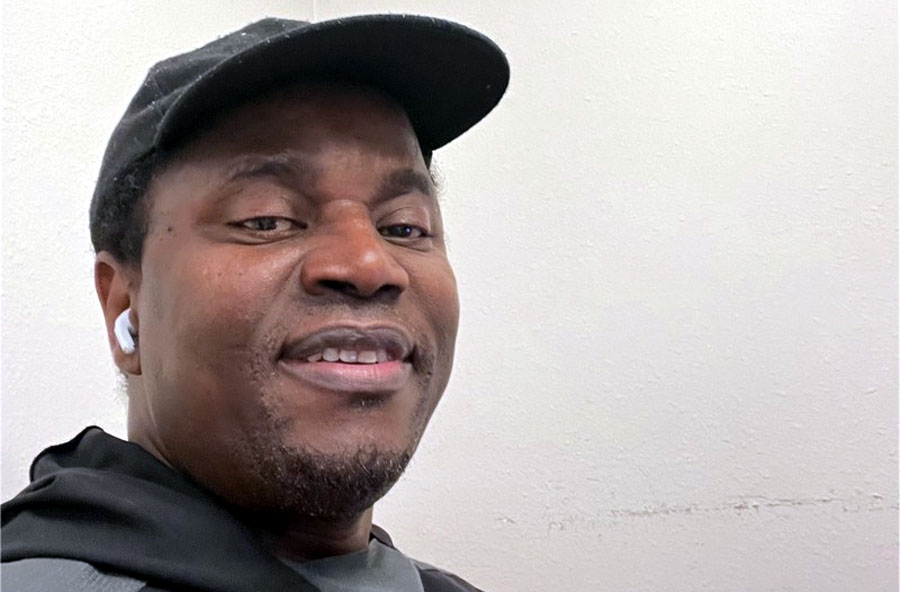
From warmongering to lie-peddling, Alapomu go explain taya
Tunde Odesola
(Published in The PUNCH, on Friday, November 22, 2024)
Ankara needs no introduction; it’s the capital of Turkey, an Islamic country with a 99% Muslim population. Ankara needs no introduction; it’s the name of the brightly-coloured cotton fabric popular in West Africa. Ankara is the introduction. It marks out its wearer as a guest qualified for semo and plastic bowl at Nigeria’s owambe shindigs. Welcome, dear ankara – the uniformity cloth, clothing the lowly and the mighty at parties, like green leaves clothe móín-móín and èko, two edible kindreds, tumbling in embrace down throaty road.
Native to Ankara, Turkey’s second largest populous city after Istanbul, are the Angora goat, Angora cat and Angora rabbit, renowned for their extraordinary coats which are shorn and made into mohair, a globally prized source of cotton, with Angora being the westernised name for Ankara.
Yet, there’s another meaning to ankara. In Spanish, ‘encara’ means ‘still’, an adverb, whose synonyms include yet, nevertheless, nonetheless, notwithstanding, however, despite that, all the same, even so, in spite of etc.
On April 18, 2007, at 19 years of age, Lionel Andres Messi Cuccitini, football GOAT, during a Copa del Rey semifinal first-leg match between Barcelona and Getafe, singlehandedly dribbled past the entire Getafe team, leaving in his wake, players and goalkeeper biting the grass, with the commentator, Joaquim Maria Puyal, screaming, “ankara Messi, ankara Messi, ankara Messi, Messi, Messi, ankara Messi, ankara Messi, ankara Messi, gol, gol, gol, gol, gol, gol, gol, gol, gol, goooooooooooooooooo…”
From Barcelona’s right half of the centre circle, Messi got a short pass from Xavi and made a beeline for goal, ghosting Getafe players, who fell over themselves like bags of beans, making the commentator scream, “ankara Messi, ankara Messi – meaning: ‘still Messi’, ‘still Messi’, ‘still Messi’, as each Getafe player tumbled and the entire stadium stood on edge, frenziedly watching if the charging GOAT was going to miss or score. The GOAT did not miss. He scored the greatest Goal of All Time. And the whole stadium – Barcelona and Getafe fans – erupted in ecstasy.
READ ALSO:
- EFCC chairman: Supreme Court judgement makes us stronger
- IMF praises Nigeria’s economic reforms as Tinubu promises to reduce hardship
- Reps to criminalise dichotomy between HND, BSc certificates – Speaker Abbas
Gripped by the pulsating dribbling run that produced Messi’s goal, the Catalan radio commentator, Puyal, mispronounced ‘encara’ which means ‘still’ in Spanish as ‘ankara’, thereby gifting football lexicon a new word. If you’re in doubt, please, google ‘Ankara Messi’.
I’m ready to put my neck on the chopping block at Ìmògún, the ancient place of skulls, if any of the three following assertions is wrong. One: Ankara, Turkey’s capital city, is not unfamiliar to the Alapomu of Apomu, Oba Kayode Adenekan Afolabi. Two: The Igbákejì Òrìsà is not unfamiliar with ankara, the popular fabric; and three, the stylish Alapomu is not unfamiliar with designer clothes made from Angora furs.
But, by the king’s insistence on standing his ground even though he’s standing on quicksand, the crown may tumble into the gutter of politics. It’s evident the kabiyesi believes that a lie vehemently told possesses the capacity to become the truth after some time like a lizard becoming a crocodile after eating. His rejoinder to the viral video of his call to arms screams, “A bad excuse is better than no excuse.”
Since public outcry trailed the video of Oba Afolabi, in which he personally called for violence in the 2023 Ayedaade/Irewole/Isokan House of Representatives election in Osun, Afolabi has remained as tenacious as Messi, trying to dribble out of the odium his indiscretion has landed him.
This is the badly-worded rejoinder the king sent to The PUNCH: “ALAPOMU IS NOT A WAR MONGER – Alapomu Media Aide.
“The attention of Oba Kayode Afolabi, the Alapomu of Apomu has been drawn to an opinion written by a Columnist titled “Apomu King turns war monger for PDP” published in a national newspaper.
“A statement made by his media aide, Tolu Adetunji said Oba Afolabi is not a war monger but a man of peace. He said the article is biased, prejudiced, subjective, one sided opinion which is not based on facts but on a video which the King has refuted in many national newspapers and online publications.
“The refuttal was made shortly after the video went viral nearly a week ago” according to the Media Aide.
“In the refutal the King said the video was doctored to bring his reputation down in the eyes of the right thinking members of the society.
“Based on the rebuttal, the Media Aide said “anyone who wants to do a story or write an opinion on the video should be fair and objective by balancing the story with the king’s official response to the video.”
I won’t bore you by reproducing all the incriminating assertions the Alapomu made while gassing at the empowerment programme by the incumbent House of Representatives member for Ayedaade/Irewole/Isokan federal constituency, Lanre Oldebo, recently. I’ll take just a paragraph of his speech.
READ ALSO:
- 115 terrorists killed, 289 others arrested in one week, says military
- Messi remains greatest player of all time – Rodri
- Dozens reportedly killed in Israeli strikes on northern Gaza
Oba Afolabi, “I said, Mao, if the election turns to war, so be it; if it turns to combat, so be it. No one can cage the king but God. I told Mao that at all costs, I am solidly behind him – go and unleash absolute violence – this candidate (Lanre) MUST win the election. Then the situation snowballed into “Ta! Ta! Ta! Ta! Ta! To! Ta! Ta! Ta! Ta! Ta! We thank God the effort yielded good fruit…”
May it please your kingship, Oriade, to know I did not remove one ‘ta’ from the 10 ‘ta-ta-ta’ and the one ‘to’ you said to describe what followed your battlecry. This is because I do not want to misquote your majesty.
Being a commoner in conversation with royalty, I need to minimise my excitement and maximise this opportune moment of man-god correspondence because the bull is no mincemeat to be hit twice by the hunter’s arrow, a kìí rí efón ta léèmejì.
The more I watch the video, the more I’m confused as to the motive of the kabiyesi coming out more than one year after the electoral heist, to publicly admit his role in the coup. I’m confused because the kabiyesi is a man of integrity; he wouldn’t say such a thing for money.
I sincerely feel pity for the kabiyesi because the video pinned him against the wall. Going by the language of his rejoinder, he didn’t really want to start a media war but he needed to say something, and by saying something, he impugns my own integrity, leaving me with no option than to spit out the salt and the fart. Omoye has run into the market naked, the flowery ankara clothe is of no use to her.
Kabiyesi, I know the APC are no saints. They cheat, shoot and maim, too. They have kings in their pockets, too. But every infraction on public integrity should be condemned fiercely as this is being condemned.
Oba Alapomu, you said, “Anyone who wants to do a story or write an opinion on the video should be fair and objective by balancing the story with the king’s official response to the video.”
What a cheeky statement! Kabiyesi, I advise you should just squarely face the warmongering duties you’ve taken on behalf of your party, the PDP, and leave elementary journalism alone.
Alayeluwa, I guess those around you, who have passed by a newspaper house in their wakabout peregrinations, are the ones telling you I must ‘balance’ my article, “Apomu king turns warmonger for PDP,” with your baggage of lies.
Kabiyesi, let me throw this in real quick, it might help your understanding of journalism. Sir, journalism is a profession based on truth, fairness, equity and justice. You lost the moral authority to call for balance when you gathered the balls of the APC in your hands and sharply pulled them backwards. Ouch!! You know it hurts. As the saying goes, “He who comes to equity, must clean with clean hands.” Igbá Kejì Òrìsà, did you come with clean hands?
Alapomu, you also said the video of your shenanigans was doctored. Please, kabiyesi, with due respect, ask enlightened people around you what is meant by, “He who alleges must prove.” Your Highness, the onus lies on you to produce the ‘authentic’ video, where you didn’t say all the things you said.
My Lord, I humbly challenge you to produce the video proving that I maligned you in any way. I am dead sure you can never produce such a video because any video you produce won’t only become an exhibit in court, it will also be subjected to forensic analysis as INEC, Police and the DSS will be joined in the case, and then, what the PDP cooked that burnt down the whole house would be revealed.
Kabiyesi, sir, your laughable rejoinder mistook denial of an allegation for proof of innocence. That may be a royal way of thinking but it’s not the justice way of thinking. Truth doesn’t think like that.
I’ll advise the kabiyesi to just apologise (publicly or privately) for the viral outburst and treat all citizens as his children, going forward. But if the Oriade prefers media back-and-forth, I’ll hold steadfastly my truth to his sword.
By the way, instead of cheerleading the PDP, the kabiyesi can earn some foreign currencies from publishers of English dictionaries – Thesaurus, Longman, Oxford, Merriam-Webster, Cambridge and Collins – by patenting his own meanings of electoral violence, rigging, prebendalism, serfdom, injustice, vanity, intolerance and evil.
Email: [email protected]
Facebook: @Tunde Odesola
X: @Tunde_Odesola
Opinion
Apomu king turns warmonger for PDP

Apomu king turns warmonger for PDP
Tunde Odesola
(Published in The PUNCH, on Friday, November 15, 2024)
As a nobody son of a nobody, I dare not caress the blade of the king’s sword with the palms of my hands. Otherwise, blood shall trail my footsteps to Ìmògún, the ancient place of skulls, where the heads of the guilty and the guiltless tumble down the hill on the king’s inviolable order. In utter respect and total submission, I bow and tremble before the throne of Apomu! Who am I to look into the eyes of the gangster of Apomu, Oba Kayode Adenekan Afolabi? Èwò orisa!
As a commoner, I dare not disrespect the Alapomu. May Sango kill my bata drum and its accoutrements! I fear the king, I swear. May the king’s sword not be unsheathed from its scabbard before my very eyes, and stabbed into my very back – won ò ní ti ójù mí yo idà, kí wón tí èyìn mí kíbó. The mighty king kills who dares, aróbafín ni oba n pa! May my writings and agitation not kill me like Ken Saro-Wiwa. May the king not kill me.
Trembling – therefore – I maintain égbèfà distance near to the king; fearful – thereof – I move away from the king at égbèje distance because, in the land of Ódùdúwà, you dare and die – the king is the next in command to the gods.
In the land of Káárò Ójíire, nobody greets the king standing, we prostrate to greet the Alapomu, the almighty oba who gallantly fought on the side of the Peoples Democratic Party in the Osun House of Reps election war in 2023. K-a-b-i-y-e-s-i o!
Actually, I didn’t set out to write about the Alapomu in this edition. I had my mind set on the great Baptizer, sorry, I mean the great Balthazar of Equatorial Guinea Kingdom, Emperor Ebang Engonga (GCFR), who baptised over 400 women in the sea of his semen.
Because of its faraway distance, I was preparing to tread the spider’s web to Malabo, moving gingerly, ensuring my feet and hands did not get entangled in the naughty knots dotting the spider’s silky entrapment while trying to critique Balthazar.
But, a day before I was to write the Balthazar article, a bedlam suddenly arose over the viral video of the Alapomu in a Whatsapp group I belong to. I didn’t join the hullabaloo but took notice of the various press statements about the unkingly action of the Alapomu.
Most Whatsapp groups are madhouses with madmen and madwomen prescribing medications for madness. To maintain your sanity, you must know how to unstick yourself from the gummy madness online.
READ ALSO:
- Ondo poll: Three gov candidates withdraw for Aiyedatiwa
- $6bn fraud: Judge scolds Agunloye’s counsel over delay tactics
- Emefiele printed new naira notes different from what Buhari approved – Ex-CBN official
The farmer’s calamity is the sparrow’s hilarity. I repeat, the farmer’s cause of weeping is the sparrow’s source of laughter. The sparrow’s belly, full of corn, draws scorn and baleful looks from the helpless farmer.
Journalism and quicksilver and shifting sands are all children of the same father called Dynamism. The life of a columnist is the fate of the Swiss watch – tick-tock, tick-tock without rest – life of news monitoring round-the-clock, and when you think you finally got a topic you want to write about, another bigger story breaks, belittling the story you’re exploring. When this happens, the columnist becomes a creative spider, webbing a potpourri of tales.
You will agree that Balthazar’s story should be a stand-alone tale. Balthazar is big. He’s an elephant, he needs space. And I figure the Balthazar story will still resonate throughout the year, so I can always come back to it, but the Alapomu story would soon be lost in the ocean of the tyranny our tyrant elite drown the masses.
Along the way, I had also given a thought to the interview by popular gospel musician, Yinka Ayefele, whose radio guest – a demented cannibal, claimed to have killed over 80 persons. Ultimately, however, I had to drop Balthazar and Yinka Ayefele, and hug the Alapomu.
Crowned only four years ago, the viral video of Alapomu’s verbal dysentery during a PDP empowerment event in his domain recently is both repulsive and shameful.
Fellow Nigerians, this is a translation of what the man called kabiyesi said in Yoruba, “I will tell you PDP members a secret: Go and take good care of your house because we do not know who the rival party will put forward (for the next election). If the rival party puts forward a strong candidate, and if there’s no unity in PDP, it can affect us. I always say something to people – you don’t know the value of your possession until you lose it. No matter what, let’s cherish our common interest.
“I’m using this opportunity to beg you (PDP members) to stand by Lanre (Oladebo). On the eve of his election, Akogun stormed my palace, and said, “Kabiyesi, you have been slammed to the ground.” I said, “Who slammed me to the ground?” He (Akogun) said, “It is Olufi (the King of Gbongan).” I said, “What? Olufi!? Olufi is my son! Gbongan was founded in 1793, the Olufi is junior to me, he should be calling me father. How can he slam me?
“Akogun spoke and maintained that the rival party had met.” I said, “Ha, the election is no longer between Lanre and Oluga, it’s now between Olufi and I, and I will show him (Olufi) that I’m his father. I had an elaborate meeting with Mao, who didn’t reveal the content of our meeting to you people. He (Mao) is right behind me here. (He looks sideways to his back where Mao was seated).”
Boasting of his indomitable powers, the Apomu ruler continued, “I said, Mao, if the election turns to war, so be it; if it turns to combat, so be it. No one can cage the king but God. I told Mao that at all costs, I am solidly behind him – go and unleash absolute violence – this candidate (Lanre) MUST win the election. Then the situation snowballed into “Ta! Ta! Ta! Ta! Ta! To! Ta! Ta! Ta! Ta! Ta! We thank God the effort yielded good fruit…” And the people hailed the king.
READ ALSO:
- Train attack: ECOWAS court dismisses SERAP suit against FG
- Court orders varsity to pay lecturer N40m compensation for wrongful dismissal
- Worry over cash scarcity in banks as farmers mop up naira
Lanre Oladebo, the incumbent House of Representatives member representing the Ayedaade/Irewole/Isokan federal constituency, is an indigene of Apomu while his major rival in the 2023 election, Mrs Taiwo Oluga, an All Progressives Congress chieftain, whom Oladebo overthrew, is an indigene of Gbongan. Mao’s full name is Alhaji Lateef Adeniran. An ex-chairman of Isokan LG, Mao is also from Apomu.
The Ayedaade/Irewole/Isokan federal constituency has a history of producing women for the House of Reps seat, with a former Speaker, Mrs Patricia Etteh (PDP), and Mrs Ayo Omidiran (APC), representing the zone for two terms each before Oluga was elected in 2019, losing re-election in 2023 to Oladebo, a male.
The inadvertent revelation of the Alapomu confirms the ta-ta-ta-ta-ta-to-ta-po-pa that shot Oladebo to victory. What a king! What a country!
The ta-ta-ta-ta-ta king of Apomu is not an ápòdà; he’s educated, handsome and suave. But a king should not abandon the nobility of his throne to roll in the gutter of politics because, eventually, he would be like the old man, who ties corn cobs to his waist and is being chased about the village by chickens pecking at his Balthazar.
Apomu was a great community, historically. For about 400 years, Apomu was the economic nerve centre of the entire Oyo Empire of the 16th Century. Its strategic location as a land connecting various Yoruba inland and riverine communities, together with its proximity to resources, accessible roads and political stability, made Apomu the market of choice.
Because of the humongous wealth it generated, security was not discounted in Apomu. Guards were on alert in the land, securing lives and property. But one day, says Yoruba oral tradition, something strange happened to one of the guards, making him to flee the town, bequeathing to the Yoruba language this proverb that describes profound calamity, “Ìlóyá, oníbodè Apòmù, a kó o n’Ífá, a gbà á lóbìnrin, òpèlè tí kò bá wolé mú, ajá gbe e, ‘e bá mi mu, e bá mi mu’, ajá ko si kònga, ilé tí kò bá wò, ilé jóná.” Meaning: It’s time to go, declares the Apomu border guard, whose Ifa goodwill was stolen, and his wife was snatched. He rushes inside his house to get his Ifa oracle to divine why life is going awry, a dog snaps up his oracle. He runs after the dog, shouting ‘help, help’ ‘help’, the dog falls into a well, he runs back home only to find his house on fire.”
That wasn’t the only unfortunate incident in the history of Apomu. Apomu also witnessed the Owu War between 1820 and 1827. The war involved Ife and Owu over the control of Apomu, which was under Ife. The war which led to the destruction of Owu caused Owu indigenes to flee to present-day Abeokuta. The war arose over slaves and trade conflicts.
By boasting that kings are above every authority in the land except God, Afolabi arrogantly smashes the meaning of k-a-b-i-y-e-s-i on the head of decency while the police, DSS and INEC watch helplessly.
I know most traditional rulers are battleaxes and footmats of various political parties. But Apomu has an illustrious history. The Alapomu should stop stoking the embers of political war, he should lead with honour.
Email: [email protected]
Facebook: @Tunde Odesola
X: @Tunde_Odesola
Apomu king turns warmonger for PDP
-

 metro1 day ago
metro1 day agoBREAKING: Port Harcourt refinery begins operation
-
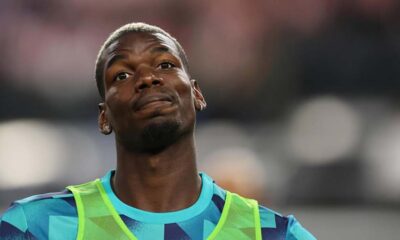
 Sports1 day ago
Sports1 day agoFrench football star, Paul Pogba’s blackmail trial begin in Paris
-
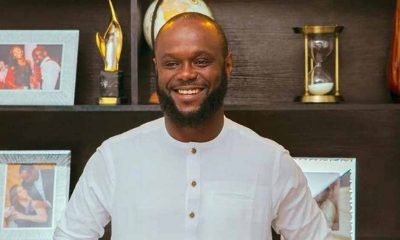
 Politics2 days ago
Politics2 days agoLagos 2027: Seyi Tinubu campaign team releases his life documentary
-
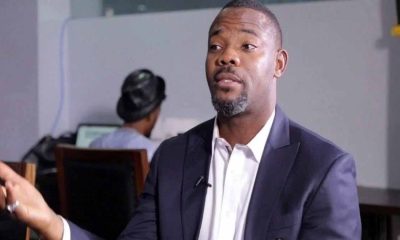
 Entertainment2 days ago
Entertainment2 days agoPolygamy best form of marriage for Africa – Okey Bakassi
-

 metro2 days ago
metro2 days ago40-foot container falls on car in Lagos
-
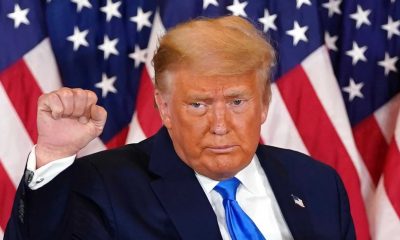
 International2 days ago
International2 days agoTrump to sack 15,000 transgender officers from U.S. military: Report
-

 Education1 day ago
Education1 day agoUS University opens 2025 scholarships for international students
-
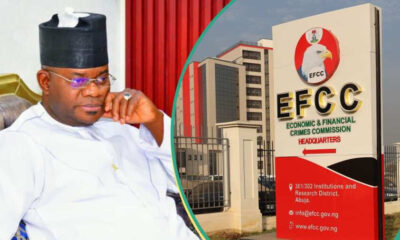
 News1 day ago
News1 day agoYahaya Bello reports to EFCC office with lawyers

